I try to believe that it’s not a curse but, sometimes it’s a hard fact to get around. It seems, every time I have a travel side trip that evolves around me and no one else, the weather more often than not tries to put a damper on things.
This past week, we sent a few nights in relative comfort at the trailer near Bobcaygeon, Ontario before heading north for some tenting in Algonquin Provincial Park. Being from the western part of Ontario, typically we enter Algonquin from the west via Huntsville or Minden and Dorset.
This time, we drove up the eastern edge of the park, through Bancroft and Whitney. My plan was to take a short side trip to Egan Chutes Provincial Park, ten kilometres out of the way at Bancroft. Of course, it began raining.
I had just discovered the existence of this non-operating provincial park a few days before. I’m sure not many know that Ontario Parks has just as many or more non-operating parks as operating. This means that hidden gems are strewn across the province with little fanfare.
What’s the difference? A non-operating park is basically a reserve and sits as undeveloped land owned and protected by the province. There are no facilities, no big signs telling you that you’ve arrived and little promotion on the official website. However, the bonus is that there are no fees, no crowds and in most cases some raw, beautiful scenery.
An operating park is developed, staffed, will most likely have camping and will always have fees.
When you arrive at the Ontario Parks official website and pull up the park search map, by default, only the operating parks will appear. You must look around and check the box that pulls up the non-operating parks. When you do this, it opens up a magic hidden world.
So, to find Egan Chutes Provincial Park, all I had to go by was that it was ‘about’ ten kilometres east of Bancroft on Highway 28. When you got to the York River bridge, you’d gone to far. Turn around, cross the bridge going west, go about 100 feet and turn north on a single lane neglected road.
You know you’ve got it right when you see the small ‘Provincial Park Boundary’ sign nailed to a tree. The road ends at what used to be a bridge across the York River. All that remains are the pillars – see that image below. At this point, there is an unofficial parking lot. There is an old logging road that heads downstream along the river. This turns into a single track trail that arrives at the Egan Chute waterfall about a kilometre off the main road.
Well, we arrived. The rain mostly held off. However, over the past week, Mother Nature alleviated any fears of drought in Ontario by dropping a pretty constant mess of rain. With that rain, what had not been a buggy season came to an end. Heading down that trail along the York River without caking on bug spray was a huge mistake.
The prize at the end of the trail was definitely worth the onslaught of bugs. Besides, it was great practice for the next three nights in Algonquin. I must warn that there was another itchy hazard on the trail. Near the point where the trail meets the waterfall, the trail gets narrow and quite overgrown on either side. In that overgrowth is a good crop of low-lying Poison Ivy.
Egan Chutes is a wild, rugged waterfall that drops some 15 feet over several drops. The water flow varies, depending on time of year and Mother Nature. I got there when the flow was pretty heavy.
A reminder, this is an undeveloped area and there are no safety barriers or warnings. You can get as close as you want to the water at several exciting vantage points. However, if you fall in, no one but yourself is responsible for you. The river does flow into calm water not very far down from the torrent.
The York River starts somewhere within the southern end of Algonquin Provincial Park. It passes through Bancroft before entering Egan Chutes. The river is a tributary of the Madawaska River, which, in turn flows into the Ottawa River then the St. Lawrence before finally emptying into the Gulf of St. Lawrence and the Atlantic Ocean.
The waterfall was named for John Egan, a long ago lumber baron in Bancroft. The park covers an area of 322 hectares.
If you look to the other side of the trail, away from the river, you will see a small area carved out of the Canadian Shield rock. This is an old quarry. There are others in the area and you can still find rare items like Nepheline, Sodalite, Biotite, Zircon, and Blue Corundum. According to the Ministry of Natural Resources, taking these rocks from the park is strictly prohibited. However, there are some local resorts that promote the fact that you can find and take this stuff from the park.
Bancroft is a quaint little town that is quite geared to tourism. The area was settled in 1852 and incorporated as a town in 1904. The population today stands at around 4,000. The railway ran through from 1900 to 1960.
As beautiful as it was on the day I visited, this spot would be an ideal day trip on drier days, later in the year when the bugs have subsided a bit. As rough as the water is, there’s definitely some swimming opportunities. Scrambling on the rocks along the waterfall is a fun challenge that can provide vantage point after vantage point.
Above is directly upstream from the main plunge. The knife-like ridges of parallel rock provide a cool view and a great place to cool your feet off.
Below is the end of the line, as far as driving is concerned. The pillars are all that remain of a former bridge (rail?)
The video below is a collection of HD clips taken on the same day as the images above.


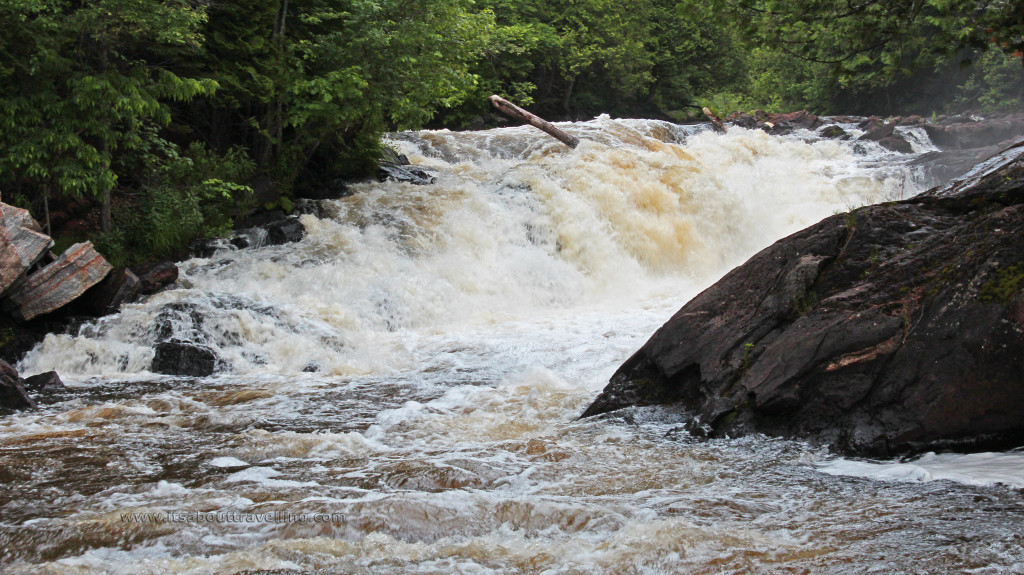
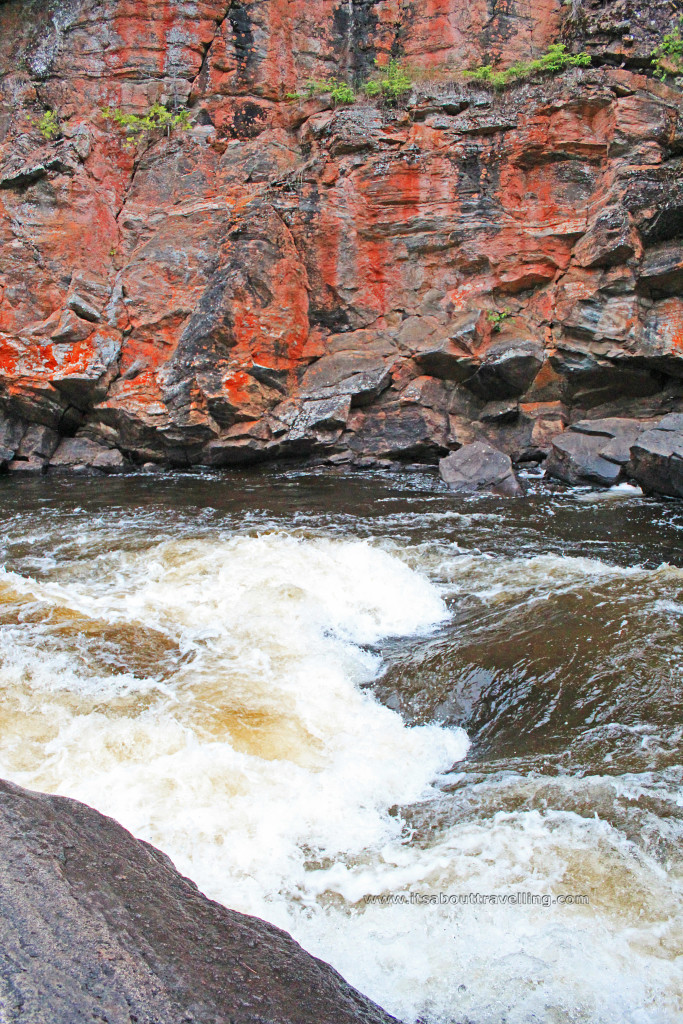
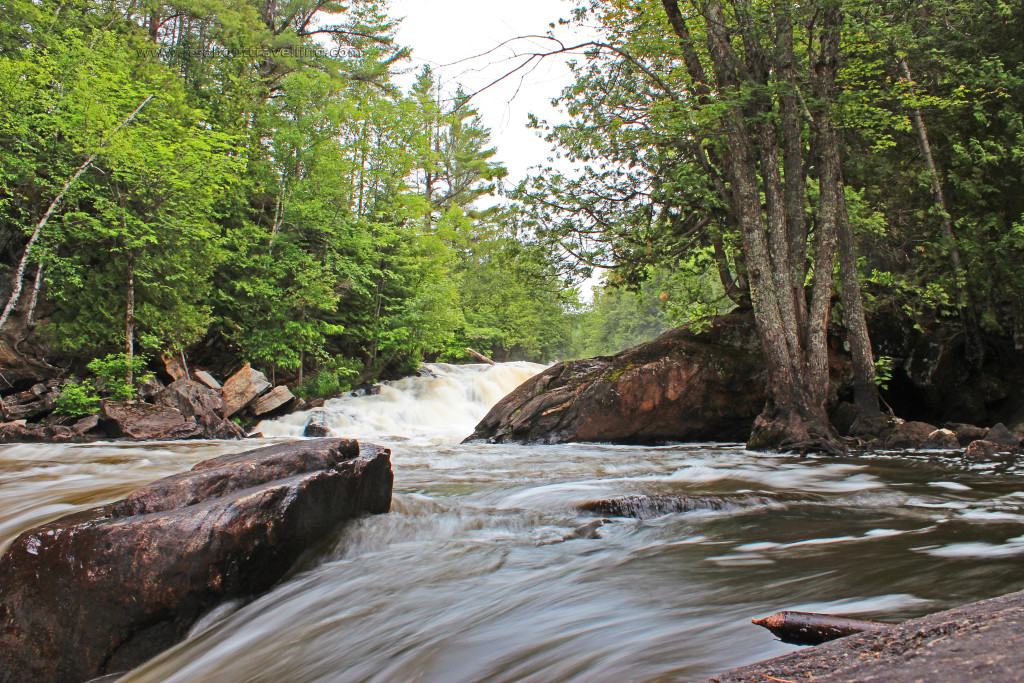
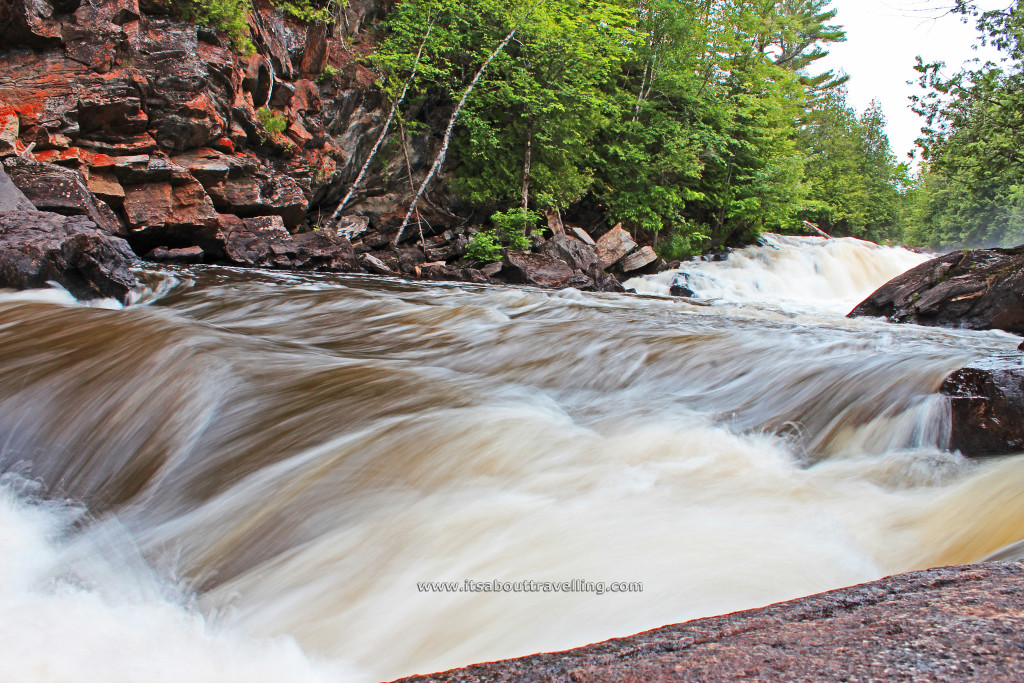
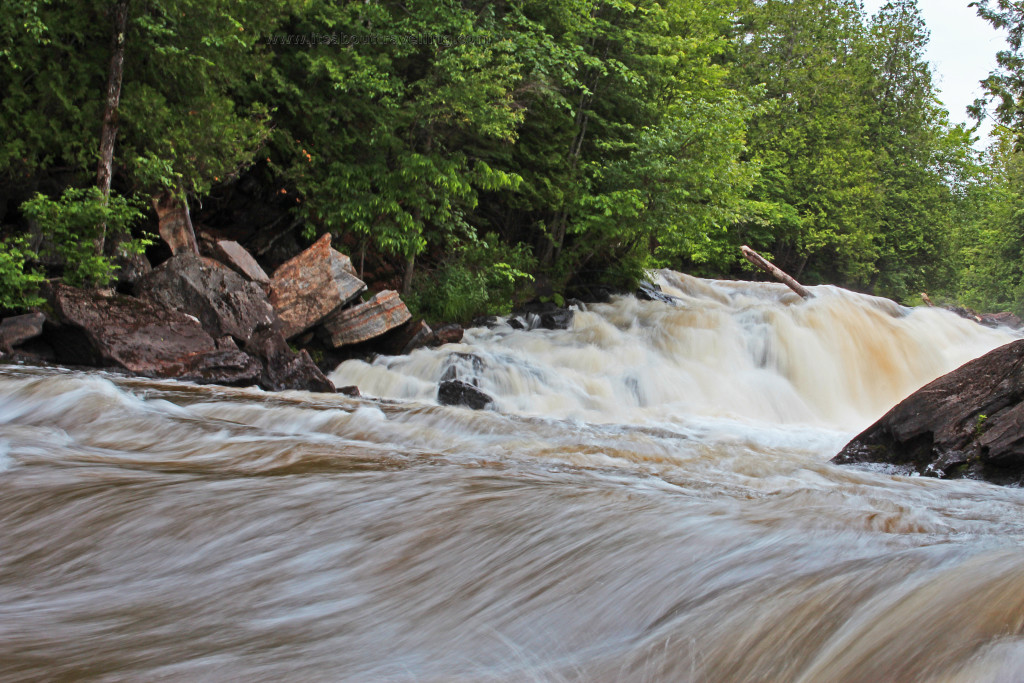
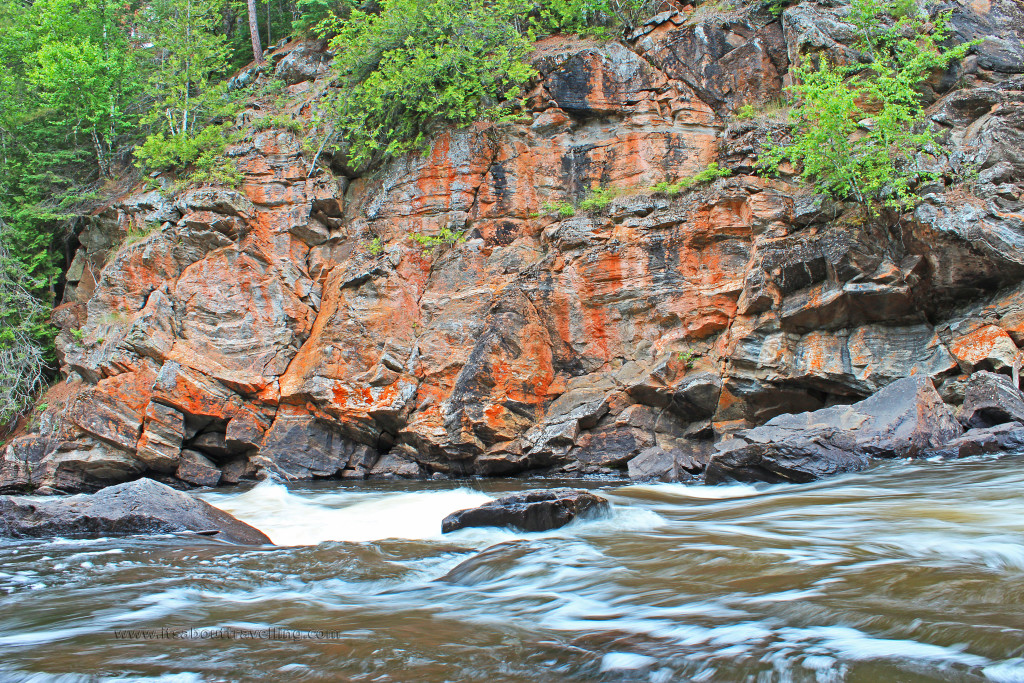
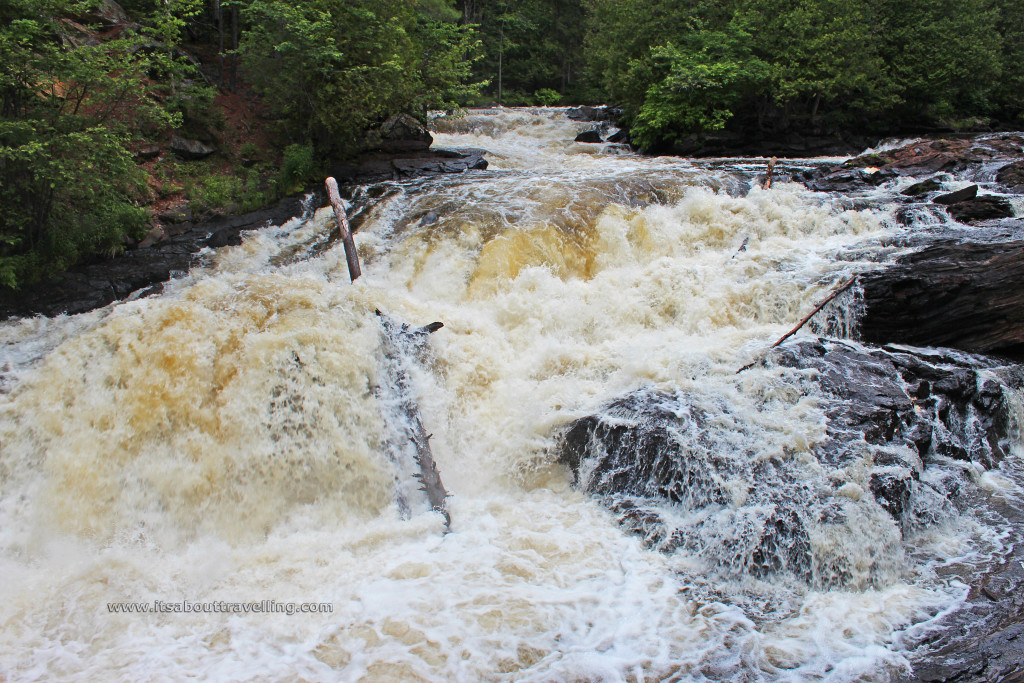
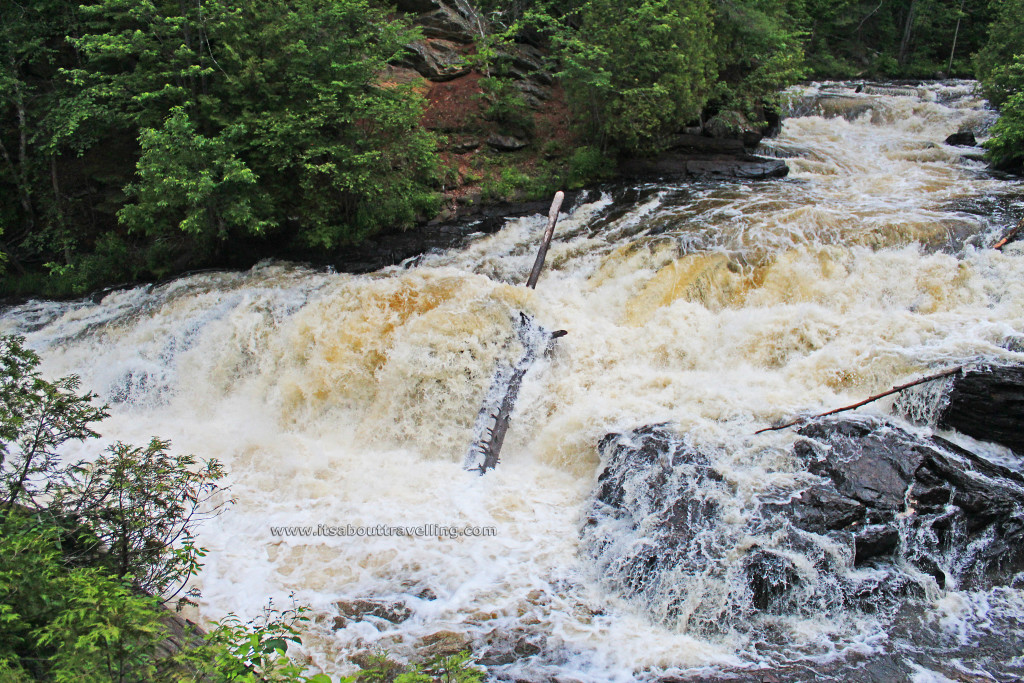
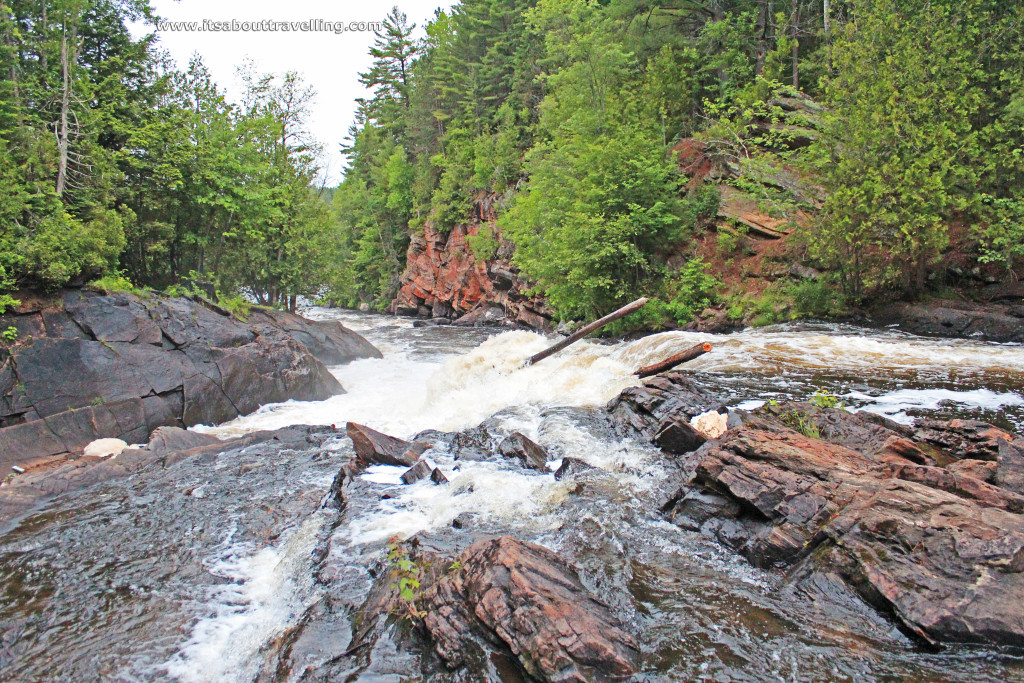
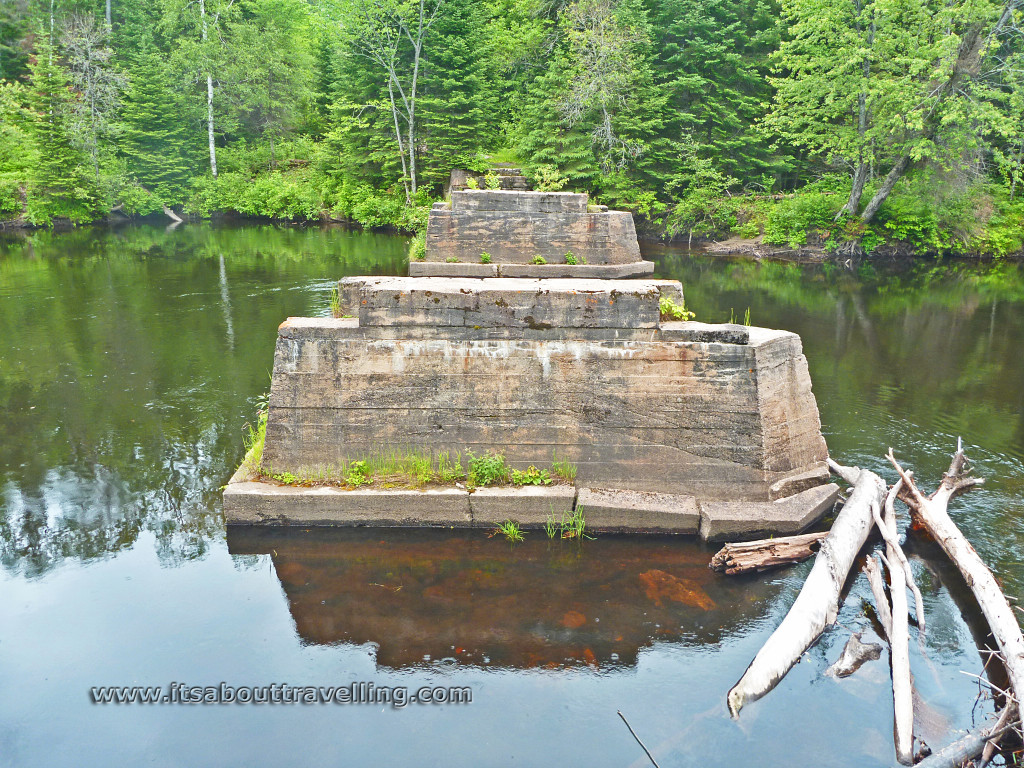





This is so pretty, and I’m thrilled to find your blog, but mostly I wanted to ask if you sell prints at all. I have fallen deeply in love with the picture of tug boats in Toronto Harbour, and would love to have a copy on my wall. Can you let me know? It’s the one on here: https://picoday.wordpress.com/2013/09/28/port-of-toronto/
Many thanks!
Judy